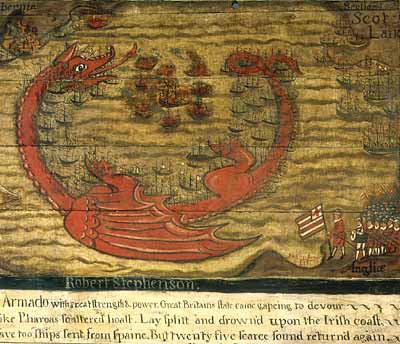Lincolnshire’s First Redcoats by Jim Snee
It is commonly asserted that prior to the introduction of khaki, the British infantryman followed the uniform established by Cromwell’s New Model Army and wore a scarlet coat. Like many things that are commonly asserted, it is more of a half-truth than a fact.

Take a visit to St Botolph’s Church in Boston and in the stained-glass windows you will see the soldiers who were prepared to defend the town from Bonaparte, but they are all in blue coats, not red. This often surprises and puzzles people, as documentaries and dramas seldom explain the myriad of forces that prepared for Napoleons long threatened, but never appearing, invasion.
The regular army at that time was predominantly wearing red coats and had been since the Duke of Marlborough had taken control of the procurement of arms, equipment and clothing for the army during the War of Spanish Succession (1701 to 1714). The setting of minimum standards for cloth, quickly standardised the colour and the dyes used and for the first time the uniforms of the British Army were, well, uniform. So, during the Napoleonic wars, the regiments that sailed for Egypt, Portugal, Spain and the Low Countries were the famous redcoats, with their muskets on their shoulders and their shako plates shining in the sun.
Closer to home, the defence of England was entrusted to numerous militia regiments raised by the government for home service. These were redcoats, but rather than the tall straight shako of the Regular Infantryman, they wore a leather helmet with a wool crest (called a tarlatan). In 1803, the seriousness of the French invasion threat was such that the government called for volunteers to defend the country. This call was met with an overwhelming wave of patriotism and volunteer infantry companies were raised all over the country. Lincolnshire itself had at least fifteen companies. These volunteers were expected to provide their own weapons and uniforms, although many volunteers were turned out in whatever clothes they had and only a pike as a weapon. Where the companies were organised and uniformed, blue was the most common coat colour, with white britches and waistcoats. The volunteers of Boston are immortalised in stained glass in such a uniform, with red cuffs and black bicorn hats.
The Tenth Regiment, known as the Royal Lincoln Regiment, began in 1685 as the Earl of Bath’s Regiment, and was dressed in blue coats. It was not the only regiment to be wearing a colour other than red, although red was quite common. At some time during (and possibly as a result of) the constitutional upheavals that deposed James II and enthroned Willaim III, the coat colour was changed to red. This seems to be a universal change, possibly distinguishing the English from Irish and Dutch troops. From this we can see that although the standardisation of the uniform of the regular army was recognised in the early 18th century, the tradition of the red coat was already becoming established.
Looking further back, in 1645 parliament ordered its New Model Army to be all dressed in red. But the four regiments of foot that held Lincolnshire during the years of the Commonwealth were not of the New Model Army, which leaves some scope for variation.
Prior to the Parliamentarian army of 1645, we have little information about the uniform colours for the troops that were raised in Lincolnshire during the civil war. The notable exception to this was the regiment raised by the Earl of Lindsey, which later became The Kings Lifeguard of Foot. The Kings Guard are famously uniformed in red, and this is often assigned to the general issue of soldiers’ clothes at the King’s Oxford headquarters (some all in blue, some all in red). However, this may be another half-truth.
The men that the Earl of Lindsey recruited from Lincolnshire, were from the part of Lincolnshire called Lindsey. This division of the Shire had been raising troops for some time and in the early 17th century had a part time force known as the Lindsey Trained Bands. Now, there are few contemporary illustrations of early 17th century soldiers, and almost none in colour. But Lincolnshire, as it often does, has a hidden gem. In the church of St Peter and St Paul at Bratoft in East Lindsey is an early 17th century painting (see the above image) depicting an allegory of the Armada’s defeat, by Robert Stephenson. This painting shows the Armada in the form of a dragon, with England, Scotland and Ireland in the corners. England, in the bottom right hand corner, is shown with a company of soldiers, the third company of a regiment (the three bands on the flag denote its number) dressed in red with white stockings and collars. It is likely that Stephenson, our rural painter, painted the local regiment and what we see here is the third company of the Lindsey Trained Bands.
So, are these Lincolnshire’s first redcoats? Not quite, but the tradition of the red coat is definitely one routed in Lindsey. In August 1585, the justices of Lindsey paid for the recruiting and equipping of 150 men to go to war on the continent. Each man was to be given his cassock (coat) and Venetian hose (knee breeches) of red cloth. Lincolnshire and red cloth have a number of traditions and the association may be an ancient one, but as far as I can prove from the historical records, these are Lincolnshire’s first red coats.
